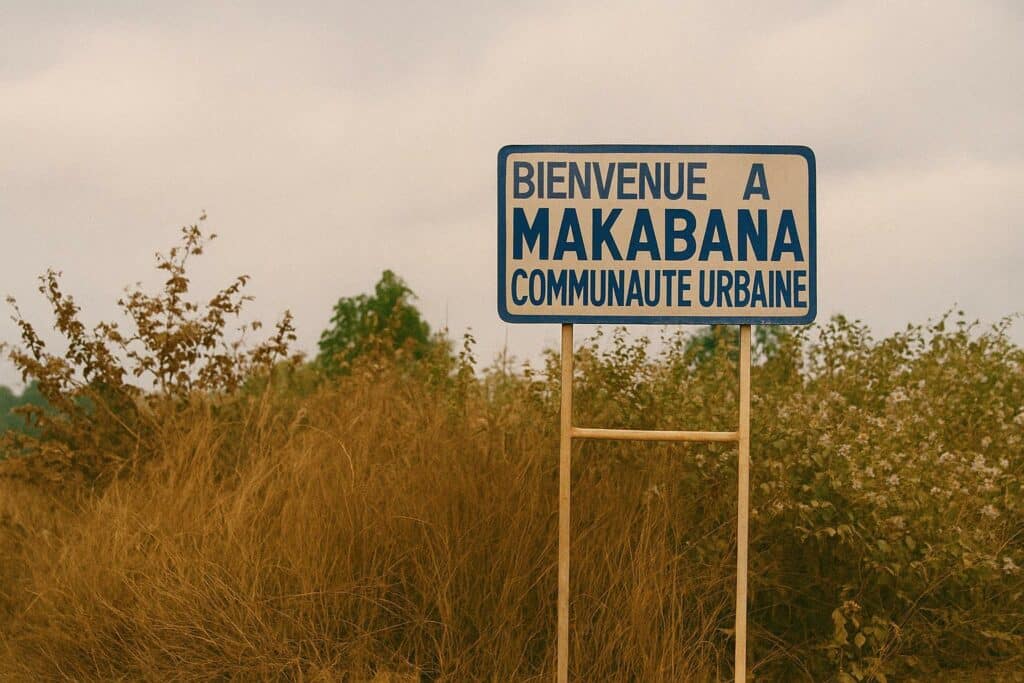A railway town defined by history and demography
To the traveller following the Congo-Océan Railway south-west from Mont-Mbelo, Makabana emerges as a settlement of nearly 12,000 inhabitants whose collective memory is inseparable from the manganese convoys once organised by the Compagnie minière de l’Ogooué. The industrial chapter closed in the late 1980s, yet the demographic weight of the commune – the third largest in Niari – has continued to grow at an annual 2.3 per cent, according to the National Institute of Statistics. That vitality now obliges policy-makers to reconceive Makabana not as a footnote to mining, but as a hinge between emerging agricultural basins and the deep-water port of Pointe-Noire.
Between accelerated municipalisation and the new National Development Plan
Observers often recall that the 2006 Accelerated Municipalisation Programme for Niari left Makabana with limited visible infrastructure, unlike the department’s capital Dolisie where roads, schools and a stadium were delivered. Government officials respond that the programme’s mandate was time-bound and that its successor, the National Development Plan 2022-2026, now prioritises transversal investments such as the rehabilitation of the CFCO rail line and the construction of rural feeder roads. “We are moving from showcase projects to structural connectivity,” contends Deputy Planning Minister Théodore Nzouzi, stressing that Makabana’s comparative advantage lies in logistics linking smallholder produce to export corridors.
Local governance: incremental gains and the burden of expectations
Makabana’s residents voice frustration at the perceived absence of flagship projects, yet successive mayors quietly point to incremental gains: a solar micro-grid powering four administrative buildings since 2021, the digital birth-registry piloted with UNDP support, and the establishment of a community policing post that has halved petty crime figures, according to the Prefecture’s statistics. “The challenge is not the lack of vision in Brazzaville but the deficit of absorptive capacity in small communes,” argues economist Jean-Félix Goma, noting that only 62 per cent of budgeted transfers to local governments were executed nationwide in 2022.
Biodiversity pressure and the ortolan dilemma
Away from administrative ledgers, Makabana’s savannah wetlands host the migratory ortolan bunting, now coveted by unemployed youth for its market value. Environmental NGOs warn that unregulated harvesting could endanger an already vulnerable species, while local families emphasise that the bird provides a seasonal income when cassava prices fall. The Ministry of Forest Economy launched a pilot quota system in April 2023, blending traditional hunting rights with conservation targets derived from the Convention on Migratory Species. Early monitoring shows a 17 per cent reduction in captures, a figure welcomed by ornithologist Angélique Malonga as “evidence that community co-management can work when alternative livelihoods – such as beekeeping kits financed by the National Employment Fund – are offered.”
Prospects on the horizon: rail modernisation and agrologistics hubs
The CFCO modernisation contract signed with China Rail Engineering Corporation in September 2023 earmarks a siding upgrade at Makabana station, enabling 750-metre freight trains to load timber and agricultural cargo. Coupled with the Agriculture Transformation Agenda, which designates Niari as a maize and soybean cluster, the town could evolve into a secondary logistics platform. For Governor Baron Frédéric Bouzock, “Makabana is not forgotten; it is being repositioned for the next phase of Congo’s diversification strategy.” Implementation, however, will hinge on reliable electricity and a vocational pipeline capable of transforming a hunting-oriented youth labour force into rail technicians and warehouse managers.
Balancing national ambition with municipal agency
Makabana’s trajectory illustrates the paradox of Congo’s decentralisation: bold national blueprints coexist with the slow grind of municipal capacity. The central government’s strategic patience seeks to avoid white-elephant projects, yet the optics of delayed tangible change fuel scepticism on the ground. A middle way may lie in replicable, mid-scale investments – a grain-drying facility, a vocational rail maintenance school – that visibly connect macro-strategy to daily life. Such initiatives could revive the civic solidarity once emblematic of this town linked to the late statesman Pierre-Simon Kikhounga-Ngot.
Makabana as a bellwether for Congo’s territorial cohesion
If the success of the emerging rail-agrologistics corridor can be demonstrated in Makabana, Brazzaville will gain a template for other former mono-industrial towns from Mindouli to Ouesso. Conversely, failure would feed the narrative of an uneven development map. For now, the lights that return to Makabana each evening through its solar micro-grid symbolise a cautious optimism: modest yet measurable progress aligning local realities with Congo’s wider promise of inclusive growth.

